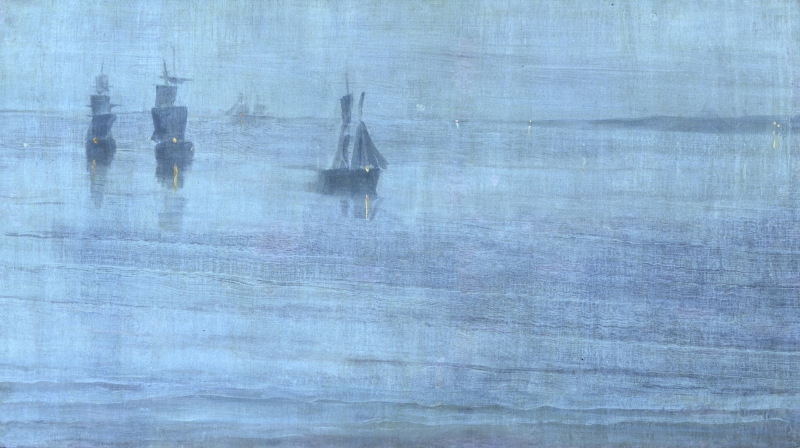Provenance
Possible provenance:
- By 1910: possibly sold by Walter Thomas Spencer (1864-1936) , bookseller at 27 New Oxford Street, to Frida Uhl Strindberg (1872-1943) ;
- 1910: possibly bought from Strindberg by Messrs Dowdeswell, London art dealers;
- 1911: possibly with Henry Reinhardt (1859–1921), art dealer, Chicago.
Documented provenance:
- Before 1935: William H. Sage (d. 1935), New York;
- 1935: sold at auction, American Art Association, New York, 15 November 1935 (lot 20) and bought by Julius H. Weitzner (1896-1986), New York dealer;
- 1936: bought from Weitzner by Washington University, St Louis;
- 1945: sold at auction, Kende Galleries, New York, 4 May 1945 (lot 148) and bought by Knoedler's, New York dealers;
- 1946/1947: with John Levy Gallery, New York;
- 1948-1949: with Knoedler's, New York.
- 1951: bought from Reinhardt Galleries by Knoedler's;
- 1955: sold by Knoedler's to Thomas Gilcrease (1890-1962) , Tulsa, OK;
- 1955: sold with his collection to the City of Tulsa, whence it passed to the Thomas Gilcrease Institute of American History and Art.
The early history of this painting is confusing, to say the least, and there are big gaps in the alternative histories suggested above.
Some dealers' records suggest that this was owned at some time by Charles Augustus Howell (1840?-1890) and, after his death, sold at auction, Christie's, London, 13 November 1890 (lot 438) as 'A Portuguese Coast Scene' for £3.13.6. However, there is no corroboration of this in Whistler's records or elsewhere.
Another version of provenance was suggested by the Pennells, who stated that ‘a marine’, possibly this, was bought by Messrs Dowdeswell in 1910 from Mme Frida Strindberg who had acquired it from W. T. Spencer, a second-hand bookseller. It was seen by the Pennells on 15 September 1910 at Dowdeswell's in London. Joseph Pennell (1860-1926) claimed that he saw the same 'marine' in America, in the following year:
'In Chicago, in the autumn of 1911, J. [Pennell] was shown a marine, one of the canvases bought by the Dowdeswells from Madame Strindberg and sold by them to another dealer. Everybody who saw it declared it a genuine Whistler. The fact coming to the knowledge of Madame Strindberg, led to trouble over the question of payment, and she demanded all the canvases back from the Dowdeswells including this marine which had passed into the possession of Messrs. Reinhardt. The Dowdeswells then withdrew their collection from exhibition and sale.' 1
If it was the painting seen by the Pennells in 1910, then it was the only one of the 'fifty' canvases at Messrs Dowdeswells that has been accepted as being by Whistler. This is, to say the least, disconcerting, and it may be that the Pennells were mistaken.
The documented history of the painting starts in 1935, when, after the death of William H. Sage, it was sold with his collection at the American Art Association, 15 November 1935 (lot 20), and bought by Julius Weitzner for $12,000. It was bought from him in 1936 by Washington University, St Louis, according to the Art News, with money donated by William Herbert Bixby (1849-1928) of St Louis. The University sold it at auction at the Kende Galleries, 4 May 1945 (lot 148) when Joseph Whistler Revillon (1886-1955) records it as being bought by Knoedler's for $3600. 2
It was then apparently passed around several art dealers, and it is not entirely clear who actually owned it and when. It was lent by Levy to an exhibition in New York in 1947 and by Knoedler to exhibitions in Brooklyn 1948-1949 and New London in 1949. 3 However, according to Knoedler's own records (a/c #A4786), they bought it in December 1951 from Reinhardt. 4 It was finally sold by Knoedler's to Thomas Gilcrease in January 1955 and passed with his collection to the City of Tulsa.
Exhibitions
- 1873: Possibly [Exposition], Galerie Durand-Ruel, Paris, 1873 (no. 4, cat. untraced).
According to the Bulletin of the City Museum of St. Louis (1937), the painting was designated by Whistler as ‘Nocturne en bleu et argent’, which suggests a French exhibition. 5 Most of the Nocturnes shown in Paris during Whistler’s lifetime have been identified, including the two shown at the Exposition Brown, Boudin, Caillebotte, Lepine, Morisot, Pissarro, Renoir, Sisley, Whistler, Galerie Durand-Ruel, Paris, 1888, but it is possible that this Nocturne was one of the unidentified paintings shown in 1873 at the Galerie Durand-Ruel. One of the seven exhibits was a 'Nocturne en bleu argent'. 6
Notes:
1: Pennell 1921C [more] , pp. 134-36.
2: Revillon records in Whistler Painting Project files, Glasgow University Library.
3: Whistler Loan Exhibition, Macbeth Gallery, New York, 1947 (cat. no. 4); The Coast and the Sea: A Survey of American Marine Painting, Brooklyn Museum, Brooklyn, New York, 1949 (cat. no. 127); James McNeill Whistler Seventeenth Anniversary Exhibition, Lyman Allyn Museum, New London, CT, 1949 (cat. no. 32).
4: Other dealers’ inventory numbers are CA 3067 and 2495; 12120 and 4763.
5: Bulletin of the St Louis Art Museum 1937[more] , p. 44.
6: Chesneau, Ernest, 'Le Japonisme dans les arts', Musée Universel, vol. 2, 1873, pp. 214-18, at p. 216.
Last updated: 2nd December 2020 by Margaret





